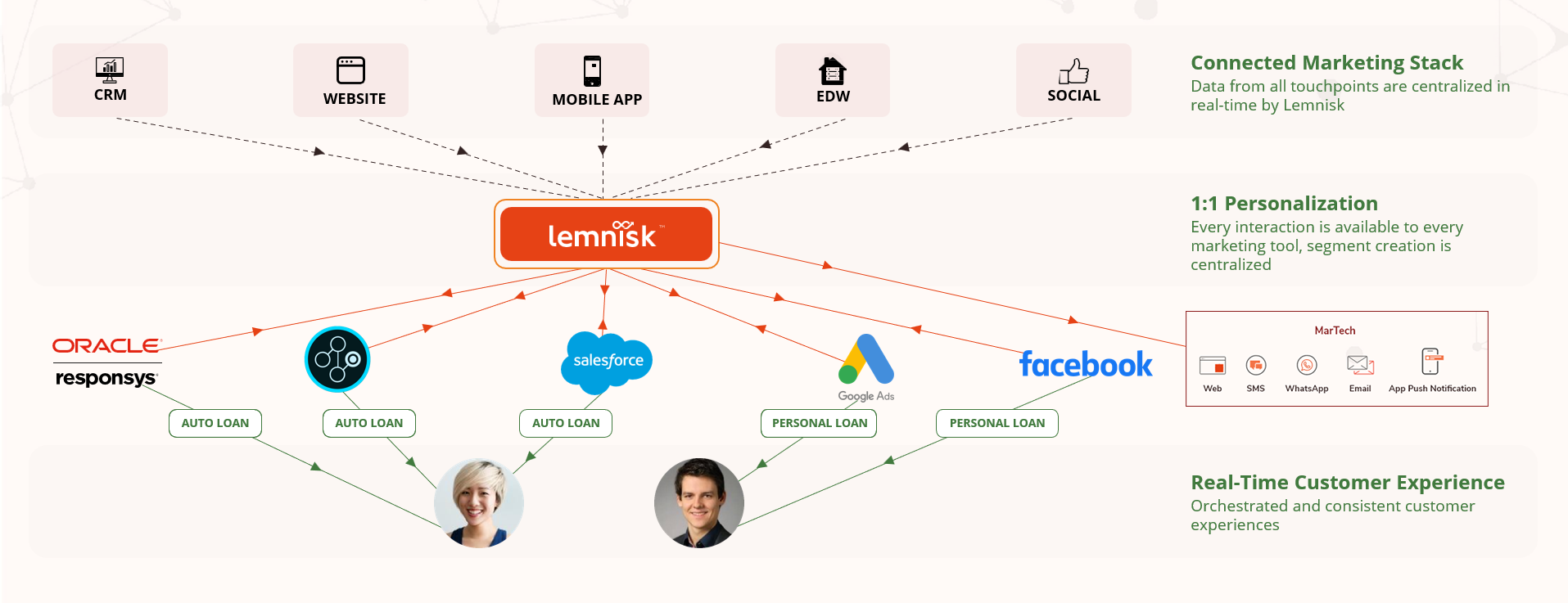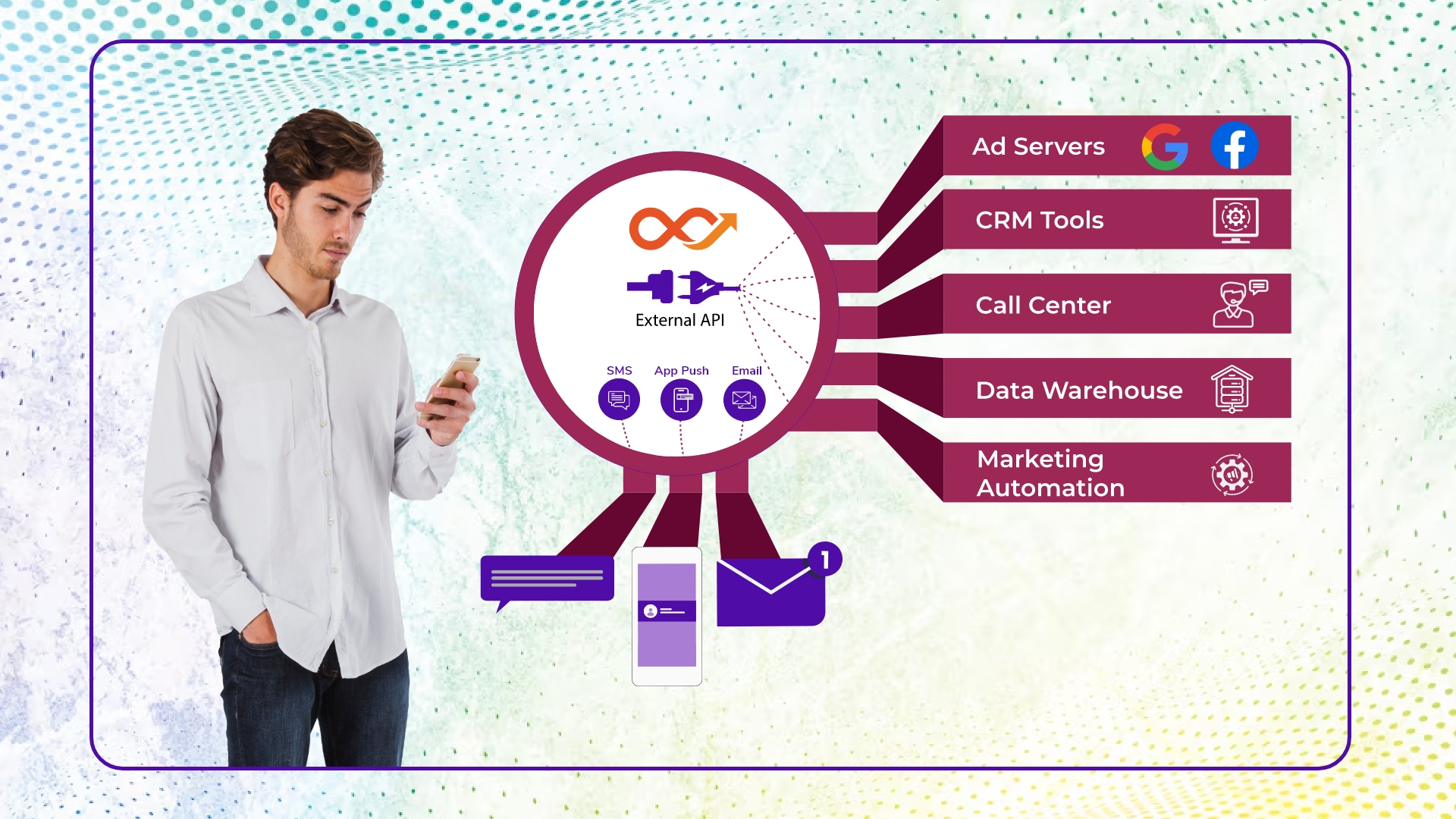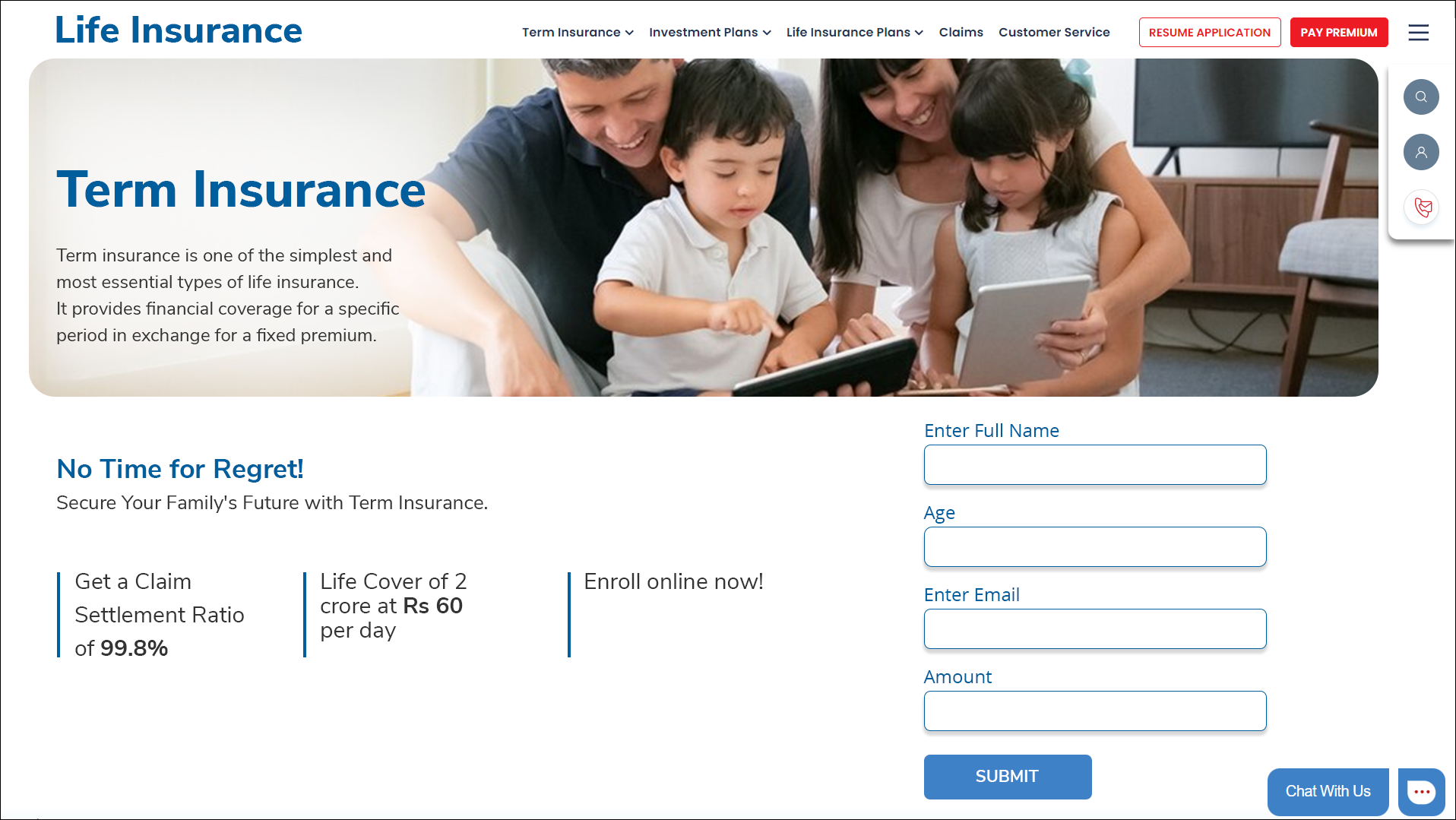A typical marketing team of an enterprise today, utilizes as many as ~90 systems and tools in their marketing stack, according to martech guru, Scott Brinker. Such a convoluted stack involves numerous connections and integrations to collect and stream customer data to several different sources, destinations, and tools like websites, marketing automation platforms, email providers, CRM, etc.
We can start listing out the numerous destinations a marketer wants to send customer data to and we wouldn’t be surprised to see the list slowly growing to be a sizable number, comprising data warehouses to marketing tools like an email provider, an internal Lead Management System and more!
Let’s understand why a typical marketing stack requires so many destination connections.
Why does a typical marketing stack require numerous connections to send customer data?
The above is a follow-up question to the primary problem statement a marketing team aims to solve – “How deeply does your marketing stack penetrate the customer experience lifecycle and tap into the various touchpoints to activate and engage the customer with personalized campaigns? ”.
Digital marketing touchpoints and communication channels keep growing by the day, and so will the need to connect to each and every single one of them so that you and your marketing stack are delivering an optimum personalized customer experience. Below is a flow diagram showing the lifecycle of customer data and the various connections in place for a well-rounded marketing stack.

If you’re using a CDP like Lemnisk to unify customer data from various sources, you can then enable this customer data across multiple channels and destinations. Below is a categorized list of such possible connections:
- Ad Platforms: Exporting the segmented audience to ad servers like Google Ads, Meta Pixel, LinkedIn Ads, etc. to run personalized advertisement campaigns.
- Communication Service Providers: Businesses run their digital marketing campaigns on messaging channels like SMS, Email, WhatsApp, RCS, Outbound Dialer, IVR and others with the help of vendors or service providers. These communication channel service providers help businesses set up the necessary infrastructure and accounts to onboard onto these channels, while Lemnisk sends across the target audience and message content via real-time REST APIs.
- Marketing Automation Tools: Lemnisk CDP can empower your MA stack by streaming raw user events in real-time to Marketing Automation tools such as MoEngage, WebEngage, Clevertap, Adobe, Salesforce Marketing Cloud etc. These raw user events can be used for segmentation, campaign triggers and many more use cases. Moreover, we can also export users that become part of the segment at CDP and essentially do segment export of these users downstream to Marketing Automation platforms.
- CRMs: Lemnisk CDP with its External API can power the enterprise’s CRM databases by posting leads. Lemnisk collects the leads from several sources like website forms or social media ads, and is capable of creating or updating these contacts into the enterprise’s CRM like Salesforce, Hubspot, Zoho CRM.
- Client’s Internal Platforms: Similar to the use cases discussed above, an Enterprise marketing team is usually always bound with several infosec and other compliances, owing to which the customer data has to be securely stored in internal tools like – Lead Management Platform, Consent Management Platforms, Contact Repositories etc.
We can keep on going, quoting more under every category and listing more niche categories, but I think the above gives a good understanding of how endless the possible connections from a CDP can be! Only your imagination and use cases put a limit to the number of connections required from your CDP.
Having understood the existing as well as growing need of more connections in your marketing stack, you might be wondering if you can spare your tech integration or engineering team from new integration requirements every other quarter.
Well, Lemnisk has an outstanding solution for enterprise marketers to solve their third-party integration needs! Our proprietary External API solution ensures your marketing campaigns dependent on RESTful API connections are taken care of without any dedicated engineering expertise deployed.
What is the External API?
External API is a marketing channel provided by Lemnisk CDP where you can run campaigns triggered to an external REST API endpoint. Marketers with little understanding of REST APIs can easily set up their API on our platform as an External API configuration, and following which they can start executing engagements on top of segments. With External API, a marketer can get started with third-party connections and integrations-led campaigns in less than 20 mins, without any dependency on their engineering teams!

Key Features
The External API works exactly like other channels, but greatly differing in the depth and flexibility it offers in setting up the configuration, and in turn, the engagements. The target destination’s specification can be intuitively set up when creating the External API definition and modified to aid to the exact use case of the marketer, be it streaming user events to a marketing automation tool like MoEngage or updating contacts to a CRM like MSD365.
Below are some key components of the External API:
- Flexible Integration: Set up a server to server connection between Lemnisk CDP and the target destination to securely transmit data from the CDP.
- Configurable Content definition: Define your own payload. It can be globally static for all engagements, or specific for every engagement or campaign.
- Personalization: Personalize the URL parameters, query parameters or the body of your destination’s payload to tailor your use campaign with user specific or event specific content.
- Frequency Caps: Just like every other channel, you can define a cap to the number of times a user is triggered by an External API on a daily, weekly, monthly or lifetime basis. This is to avoid redundant registration via the engagements that can lead to repeated records against a user, for example.
As you draw parallels between other digital marketing channels and External API, you would eventually appreciate how foundational and indispensable External API can be in your martech stack! It only differs in ‘how’ or ‘what’ the connection is set up for, unlike the other channels, where the connection is defined already, for eg. Netcore Email Services.
This ‘configure your connection’ is the secret of the channel itself. The power and flexibility resides on the marketer to configure any endpoint of their choice and define the information structure to be triggered.
Having understood how External API functions like any other channel, let us go through a sample use case.
Example: Send Lead data from the website form to the Lead Management System
A Lead Management System (LMS) is a software tool that helps businesses capture, organize, and track potential customers, also known as leads. It streamlines the process of nurturing these leads and converting them into paying customers. Most enterprises have an internal LMS, where leads flow into from several different sources – Emails, website forms, CRMs and sales portals, CDP, and more!
An LMS is where the essential lead processing takes place, from capturing to scoring the leads based on several parameters like origin and budget, to lead nurturing and using different techniques.
Use case: An enterprise user of Lemnisk CDP wants to send lead information captured on the website form to the LMS.
The above is a very common use case among Insurance and Banking clients. Their websites are optimized for SEO and they host a lead form either directly on the homepage or somewhere nearer to the landing page, like in the later folds of the screen after some scrolling.
Below is a standard example of a website lead form.

Submit Lead API: See below a sample submit lead API that will be used to collect information submitted by users on the website.
- Base URL: https://www.insurancelead.com/gateway/1.0/submit-lead
- Method: POST
- Headers:
- Content-Type: application/json
- Authorization: Bearer abcd1234xyz
- Body:
{
“Lead_name”: “John Doe”,
“Email”: “johndoe@gmail.com”,
“Age”: “29”,
“Amount”: “300000”
}
Don’t worry if you’re not very tech-savvy and don’t understand the above terminologies. Your team’s product manager/engineering counterpart would be able to assist you with setting up the configuration for the first time, after which it will be a piece of cake.
The 4 sections pointed out above are the basic composition of a standard REST API, that will be used to send across lead data from the CDP to the LMS.
Setting up the LMS API and Engagements
Configuring the API is very intuitive once you have the definition and a sample working payload. You have to simply define each section of the destination endpoint in Lemnisk’s External API builder, that lets you set up as well as test the API within minutes.
And that’s it! That is all it takes to set up an External API configuration in Lemnisk CDP. Creating engagements in the saved API configuration is straightforward. You have to ensure that the necessary lead information is being captured as a user attribute or identifier in the CDP, namely – Lead name, Lead email, Lead age, Coverage Amount in the above example.
With the above pre-requisites in place, you can readily start creating engagements and exporting your data from the CDP to your configured destination! And that’s how External API powers your custom connections and integration-led campaigns, helping your marketing strategy thrive in this ever-evolving, complex world of MarTech.
By Karansingh Bisht | Associate Product Manager at Lemnisk

Leave a Reply